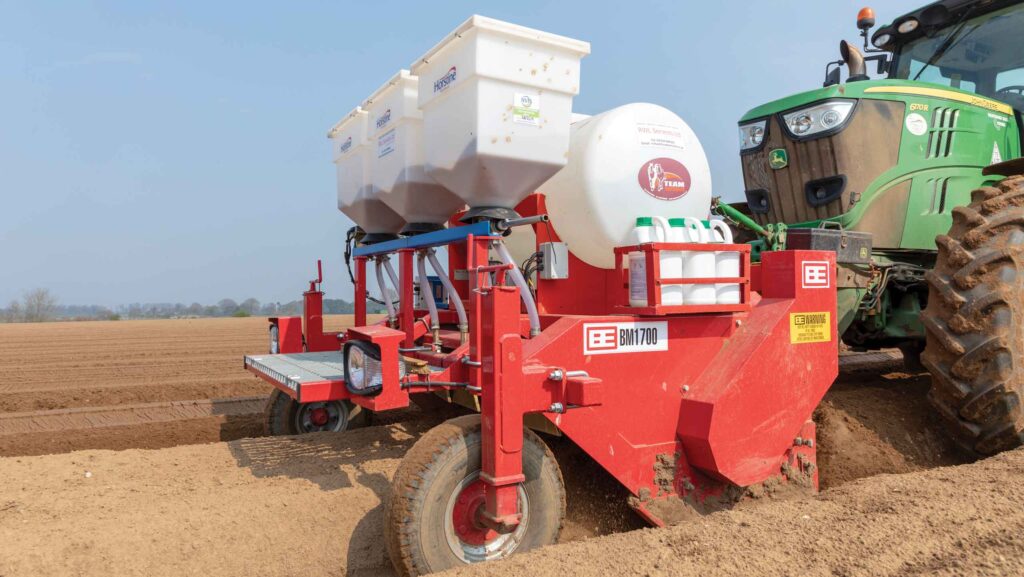6 steps for granular potato nematicide best practice
 © GNP
© GNP Potato growers are being reminded to follow the best-practice protocol for granular nematicides this spring to ensure products are used safely and are protected for the future.
Mark Taylor, chairman of GB Potatoes and working group member of the Nematicide Stewardship Programme (NSP), highlights the essential role of nematicides.
See also: How potato grower variably applies potash and magnesium
“Potato cyst nematode represents the most significant and widespread challenge in the potato industry,” he says.
“Our access to quality land is diminishing, making the responsible use of nematicides, within an integrated approach, paramount to managing this issue effectively.”
Protecting future use is especially important given that growers only have one remaining granular nematicide (fosthiaze) approved for potato cyst nematode control in the UK.
Here Mark outlines six key elements of the protocol:
1. Qualify
All operators must have a PA4 or PA4G certification and must have completed the Artis nematicide stewardship e-learning course to apply granular nematicides.
They must also be members of National Register of Sprayer Operators.
2. Calibrate
Applicators must be checked daily for damage or wear, to ensure all pipework is correctly fitted.
The applicator must be inspected and certified as fit for use by a qualified National Sprayer Testing Scheme (NSTS) engineer at least every two years.
The amount of product used should be calculated according to the area treated to make sure the correct volume per hectare is applied. For advice on how to calibrate your machinery, visit the calibration page on the NSP website.
3. Single pass
The product should be incorporated within a single pass, immediately before planting, with no granules left on the surface of the soil.
4. Shut off
All applicators must be fitted with a device in the cab that allows operators to shut off granule flow at least 3m from the end of each row.
The shut-off time allows for all piping to run out before the machine is lifted out of the ground.
5. Spillages
Use the same filling point in the field to allow any spillages to be identified quickly. Bury small spillages immediately to ensure no granules are left on the surface.
If the spillage is large, remove it to an empty nematicide container, clearly label it and return it to the manufacturer, burying any remnants immediately.
6. Check
Check treated fields 12 to 24 hours after application for adverse effects to wildlife.
Check field edges and areas where application equipment is turned on and off, but also inside headlands and breaks in the middle of the field.
For more information, growers are urged to visit the NSP website to update their knowledge on best practice application of granular nematicides before planting.

